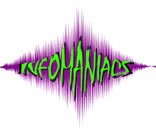Coherence
Databases,
knowledge bases, and media sources are exploding in size and number,
becoming more varied and more complex, while access through the
web and intranets have introduced huge numbers of new users with
an enormous diversity of backgrounds and skills. With such a wealth
of knowledge available to so many, the question is not simply "How
can each of us find what we are looking for?" but the larger issue
of "How can we fully exploit the growing human knowledge base across
all the facets of our life?" or in more theoretical terms "How should
human reality interface with digital reality?". The Coherence Project
will approach these questions and issues by exploring how memory
systems can be augmented so that they inherently educate each user
about their structure and content as relevant to that user's ongoing
needs and perspectives.
|
|
Object
Based Semantic Networks
This
project will construct a new data/knowledge representation formalism
to achieve the strengths of both relational data modeling and AI
knowledge representation systems without their weaknesses. Object/relational
concepts and technology will be used in the construction. The strengths
and weaknesses of each formalism are summarized below.
- Relational
Data Modeling:
- Strengths
- Entities and relationships are represented identically by
tuples (rows). Implicit relationships, represented by values,
can be made explicit through operations.
- Weaknesses
- Data and metadata (the data that describes the data) are
separated by design, tools, user groups, and volatility. Support
for inheritance and exceptions is insufficient, clumsy, and
wrought with data integrity and redundancy problems.
- Knowledge
Representation by Semantic Networks and Frames:
- Strengths
- Data and metadata are integrated, uniformly represented
and accessed. Inheritance and exceptions are strongly supported
with integrity and without redundancy.
- Weaknesses
- Entities and relationships are represented differently.
Explicit relationships are represented by links between nodes
(nodes represent entities). Implicit relationships are handled
ad hoc through deamons.
- Object
Based Semantic Networks:
- Strengths
- Entities and relationships are represented identically.
Implicit relationships, represented by values, can be made
explicit through operations. Data and metadata are integrated,
uniformly represented and accessed. Inheritance and exceptions
are strongly supported with integrity and without redundancy.
Weaknesses - To be determined.
|
|
Quantum
Informatics
Basic
research into to the quantum mechanical behavior of information
systems, including minds, brains, and machines.
|
|

